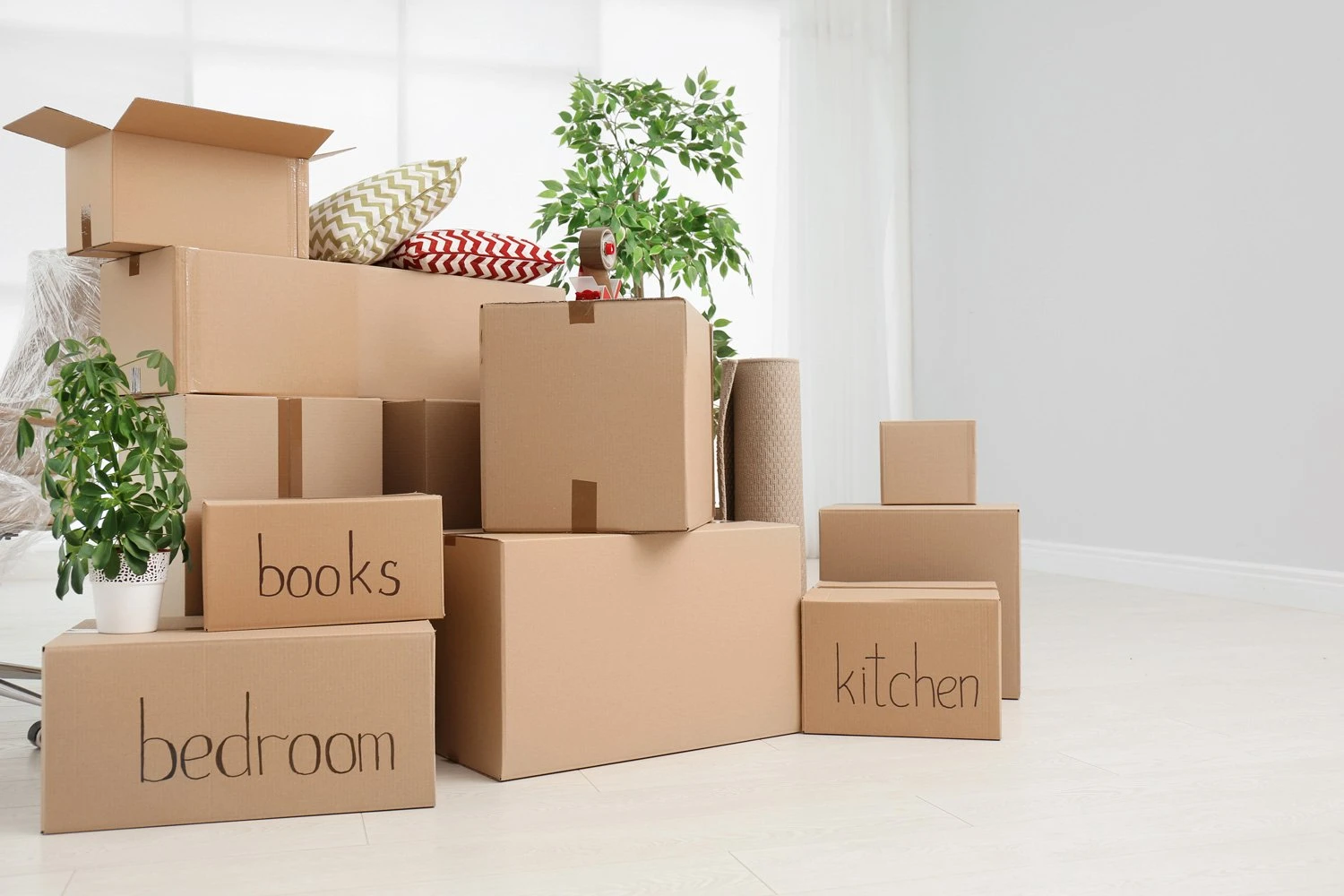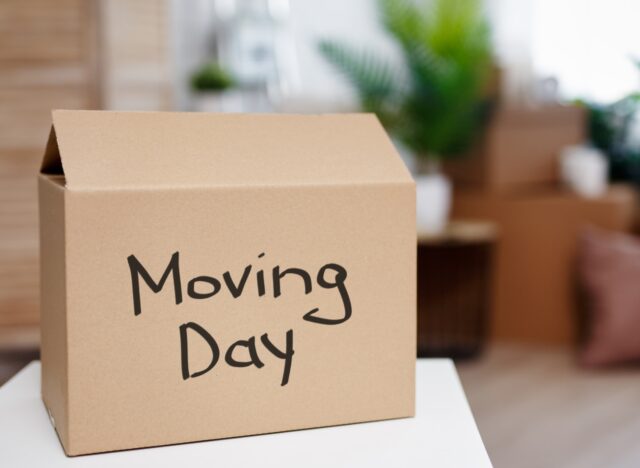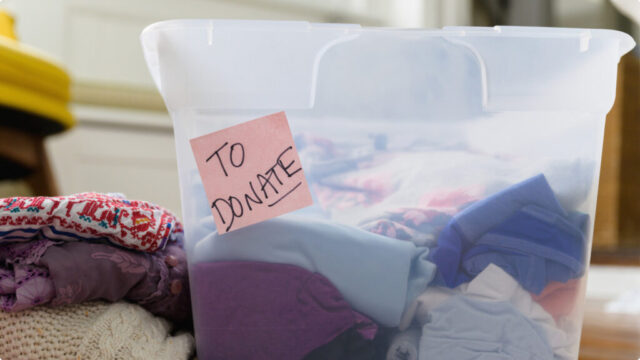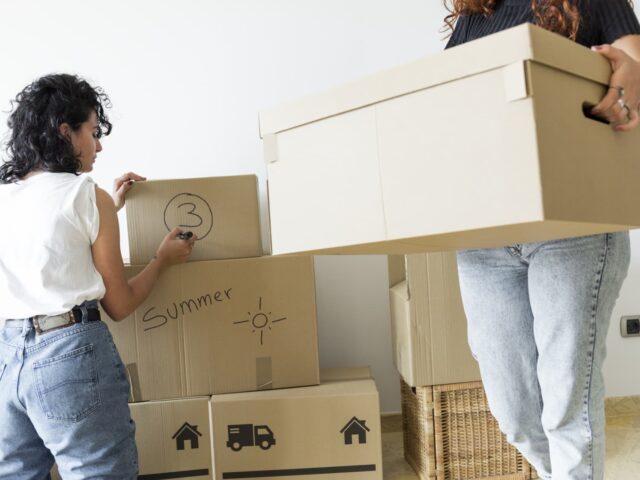
You’re moving and want to avoid the hassle of lugging too many items? Learn how to take your possessions down to the bare minimum – with minimal stress – in this guide! Moving can often be complicated and overwhelming, but by following these tips you can simplify the process and make it more enjoyable.

Identifying What to Keep and What to Discard
Moving can be a stressful time, and the inevitable purge of old belongings can seem overwhelming. However, taking the time to go through your belongings and determining what to keep and what to discard can ultimately lead to a less chaotic and more organized move. Deciding what should stay or go is often a personal decision, but there are some general guidelines that you can use when moving.
When going through your things, ask yourself:
- Do I use/wear it?
- Is it serving a purpose?
- Have I used it in the last six months?
- Will I use/wear it after moving?
- Does it add any value to my life?
Use this guide when assessing your belongings. First, make three piles — keep, donate/sell and toss items. Place all items into one of these piles accordingly. When done sorting, discard the “toss” pile right away – everything in this pile will not be accompanying you on your move!
Next, decide if donating or selling any of the remaining items is necessary — remember that one person’s trash is another person’s treasure; try selling these belongings online by utilizing websites like Craigslist or eBay for some extra spending money before your move!
Finally, make sure anything left in the “keep” pile is properly packed safely once you are ready to move into your new place.

Strategies for Selling or Donating Excess Items
To make the process smoother, here are some strategies for selling or donating old items before a move.
Selling: To recoup some of the money you’ve spent on items and reinvest it into your new lifestyle, consider making use of a reselling platform such as Craigslist or VarageSale. Another option is to set up an online store and use platforms like eBay and Etsy to reach a wider audience and turn unwanted items into cash.
Donating: If you would rather give extra belongings to those in need than make money off them, look into donating items to charity or local organizations such as thrift stores or shelters. There are many different avenues for donation depending on what types of items you have – do an online search to find out who can best benefit from your possessions. Furniture donations are particularly helpful for people transitioning out of homelessness or problem debtors with little money for furnishings; investigate local goodwill furniture pickup services and contact national charities like St Vincent De Paul who arrange donations for those in need.

How to Pack and Store What You Keep
Now that you’ve purged all the junk from your home, it’s time to turn your attention to packing and storing what you want to keep. Whether you’re moving to a new place or just want to maximize the effectiveness of your existing space, there are some simple steps for organizing and packing what remains.
First and foremost, it’s important to prevent unnecessary wear-and-tear on items with smart storage solutions. Here are a few ideas:
- Use stackable plastic containers or bins for archiving documents, out-of-season clothing, and other items that can get jammed into tight spaces.
- Seal cushions, books, and blankets in zipper bags made of breathable fabric to protect items from dirt, dust, and moisture.
- Move bed linens (sheets, blankets, pillows) into zippered covers or vacuum-seal bags for added protection during transit.
When it comes time for the actual packing process, doing so wisely will save you money on materials like bubble wrap and boxes:
- Pack lighter items like cushions or stuffed animals at the bottom of boxes with heavier ones on top — this will help evenly distribute weight when stacked together which helps prevent breakage.
- When possible, fill gaps in between large items with smaller foam pieces instead of bubble wrap — they act as shock absorbers against movement while keeping things lightweight overall.
- Wrap fragile dishes with paper towels before securely packaging within boxes — they will both cushion them while absorbing any fluid spills within transport.
And lastly… don’t forget the labels! Marking each box with its contents will help ease unpacking after arrival at your new location.

Benefits of Downsizing
Downsizing the number of items that you own can offer numerous benefits. Moving with fewer belongings reduces the amount of packing to do, minimizes the number of items to manage in storage, and helps lower moving costs. By getting rid of excess possessions before you move, you may also be able to save money by eliminating the need for additional storage units and fees. Downsizing is a great way to start fresh with fewer material belongings and can help limit any future clutter accumulation.
In addition to cost savings and a newfound appreciation for simplicity, downsizing may help improve your overall quality of life by decreasing stress during a move or transition period. The concept of minimalism has gained popularity in recent years as many people look to simplify their lives and appreciate spending more time doing activities that bring joy into their everyday lives. Downsizing your possessions before a move saves time on packing and contributes directly to this goal by giving you more free hours in your day after removing all the clutter from your house.
Conclusion
Moving to a new home can be a great opportunity to start fresh and declutter your life, but it’s not always easy to decide which belongings should stay and which should go. By considering factors such as storage space, how often you use something or your attachment to it, you can make thoughtful decisions about what to keep and what to let go while investing in useful pieces that provide both function and aesthetic value.
Downsizing before moving is not just about acquiring the right items for your new home — it’s also about getting rid of excess stuff in order to live lighter. It’s an opportunity to set yourself with fewer possessions so that you can focus on the things that matter most — like the moments spent with family, and friends and participating in activities that bring joy. Letting go of extraneous clutter before moving isn’t easy, but learning how can help ensure a less stressful transition into your new home!









